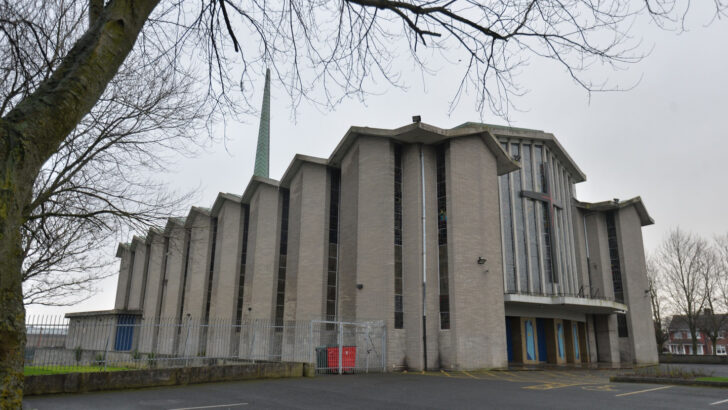Buildings End: An Ultimology Drafting Room
Exhibition at the Irish Architectural Archive , 45 Merrion Square E, Dublin 2, D02 VY60; first floor, ends October 18, 2023.
This unusual exhibition at the Irish Architectural Archive (IAA), which has another week to run, is well worth catching, and the names of those mounting it should be noted for a sight of their future work.
At the heart of it is a long drafting table from an architect’s office, the sort of thing on which the first tentative creative ideas for a new project were worked out, in the days before CAD.
Its real interest though is historical, for the worktop enshrines the only surviving relics of the Church of the Annunciation, Finglas West, built in 1967, only to be demolished in 2021.
This was one of those great basilicas which were the preferred architectural style of Dr McQuaid, the over-influential Catholic archbishop of Dublin. He hoped to see them filled with teeming congregations, but the influence of the diocese was ebbing away even as this church, said to be second largest in Ireland, went up. (What the largest was is the subject of some dispute among the experts: an ‘it depends upon what you mean…’ sort of argument.)
The work surface consists of frames of tesserae of stone and other materials salvaged from the site and set in plaster to make a series of tabletops to create the complete drafting table 20 feet long. Visitors should make sure they look over the booklets attached to the table, one of which deal specifically with the decline of church buildings.
The exhibition is the creation of three artists Fiona Hallanin, Ellen Rowley and Kate Stein who make up the ‘Department of Ultimology’ group of artists based at Trinity College Dublin (TCD). This is not an actual department of the college but a cultural activity.
However, the basic idea behind the group is very important. In the field of architectural history scholars have been content to study the inspiration, creation, and use of buildings. But the focus of this group is on the decline, decadence, and redundancy of building (and many other social activities too).
Their aim is to explore the process of redundancy and how it takes hold. The abandoned buildings of Ireland are now becoming a major controversy, and rightly so.
The group goes some way in exploring in this case why churches of all kinds go out of use and die, so to speak. This is something we all need to try and understand. See the exhibition, or catch the film at a later day, but keep the inspirational ideas behind it in mind. They have lessons that apply to all of us, however cosy we think our neighbourhoods are.
Intending visitors should take care to check with the archive, at 01-663-3040, that the film Making Dust will be on view on their intended day at 1.45pm.


 Peter Costello
Peter Costello The Church of the Annuciation, Finglas, Co. Dublin, in its last days.
The Church of the Annuciation, Finglas, Co. Dublin, in its last days. 